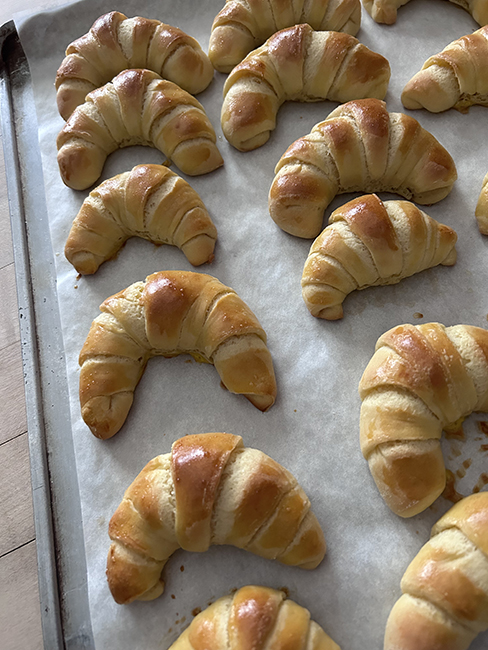
These rolls are of course inspired by poppin’ dough crescent rolls. They’re not as quick as smashing open a tube of purchase dough, but they’re easy and can be made when you have a couple of hours and can be refrigerated and baked later, or baked, cooled, and frozen to be reheated. You do need softened butter which can take planning ahead – but the butter that goes into the dough (the 4 tablespoons) is cut into pieces so will soften pretty quickly and the butter that you spread on the dough will soften during the dough’s first rise. You can also start it in the microwave. To get your egg up to room temperature quickly, place it in a small bowl or custard cup and run warm water on it. Let stand while you gather the ingredients for the crescents.
1 packet, 2 1/4 teaspoons, active dry yeast
6 tablespoons warm water
2 tablespoons granulated sugar (I think honey would also be good, but have not tested)
1 egg, room temperature
1/2 teaspoon salt
2 cups unbleached all-purpose flour, divided
4 tablespoons unsalted butter, cut into small pieces and allowed to come to room temperature
2 tablespoons butter, softened
1 egg beaten with a splash of water for egg wash
Pour the warm water into a mixing bowl or the bowl of a stand mixer. Sprinkle the yeast on top and let stand about 5 minutes until dissolved.
Add the sugar, egg, salt, and one cup of the flour to the mixing bowl, Begin mixing with a spatula or the flat beater. When it looks like a dough, add the butter pieces and continue to mix to incorporate. Add enough of the remaining cup of flour to make a soft dough that’s not too sticky. If your mixing by hand, turn the dough out onto a floured surface and knead for 5-10 minutes until smooth. If you’re using a stand mixer, beat with the padel for about 3 minutes.
Place the dough in a container with a lid and let rise for an hour to 90 minutes, until doubled.
Line a baking sheet with parchment paper. Scrape the dough out of the container onto a floured surface and roll out into a 12-inch circle. Gently spread the 2 tablespoons of butter onto the dough. Cut the circle into quarters and then cut each quarter into 3-4 wedges. Roll the wedges towards the point to form crescents and place on the parchment lined tray. Cover loosely and let rise another hour, or place in the fridge for up to overnight and bake later. Towards the end of the rising time heat the oven to 400°. Brush the rolls with the egg wash and place in the oven. Immediately reduce the heat to 375°. Bake for about 12-15 minutes until golden brown. Eat right away or cool completely and freeze for later.
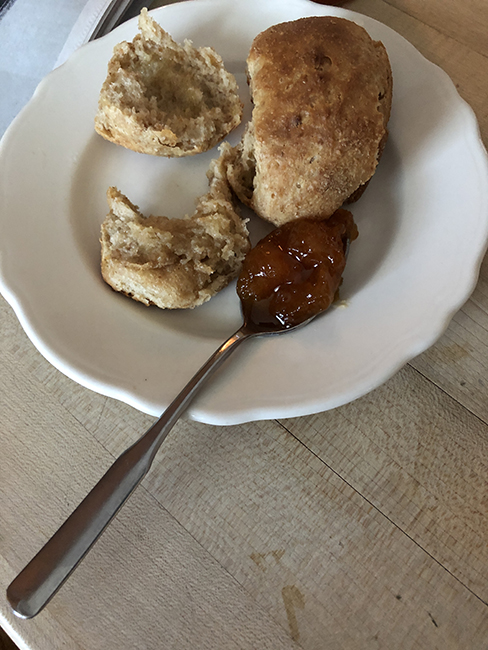
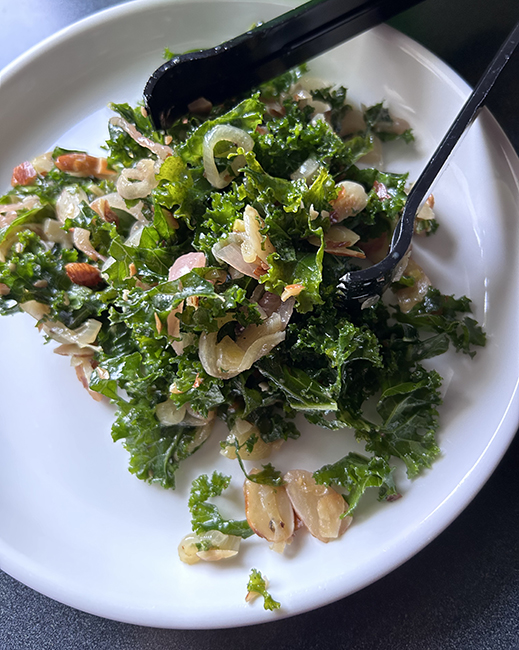
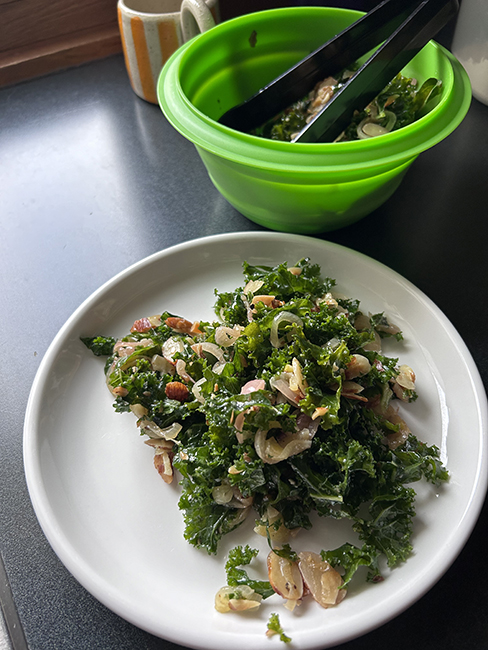
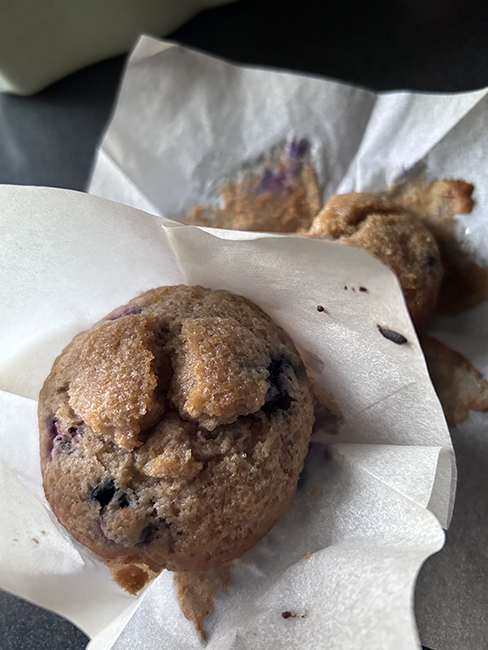

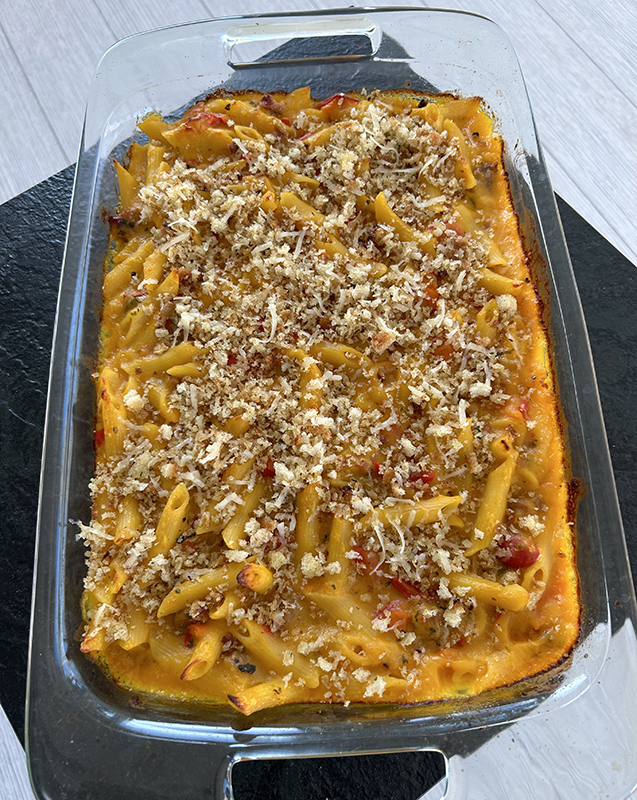
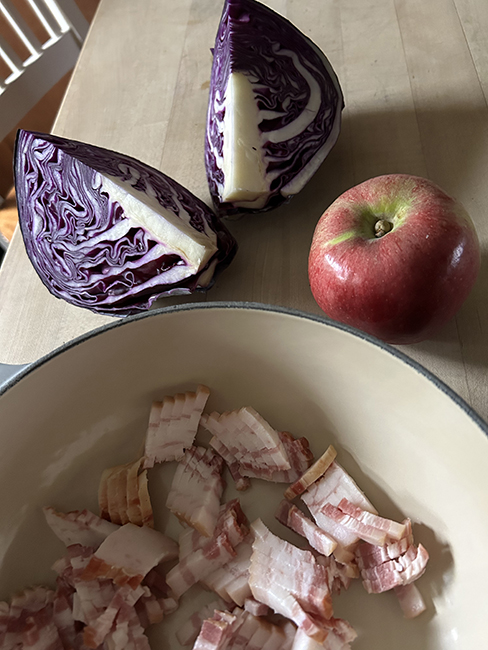

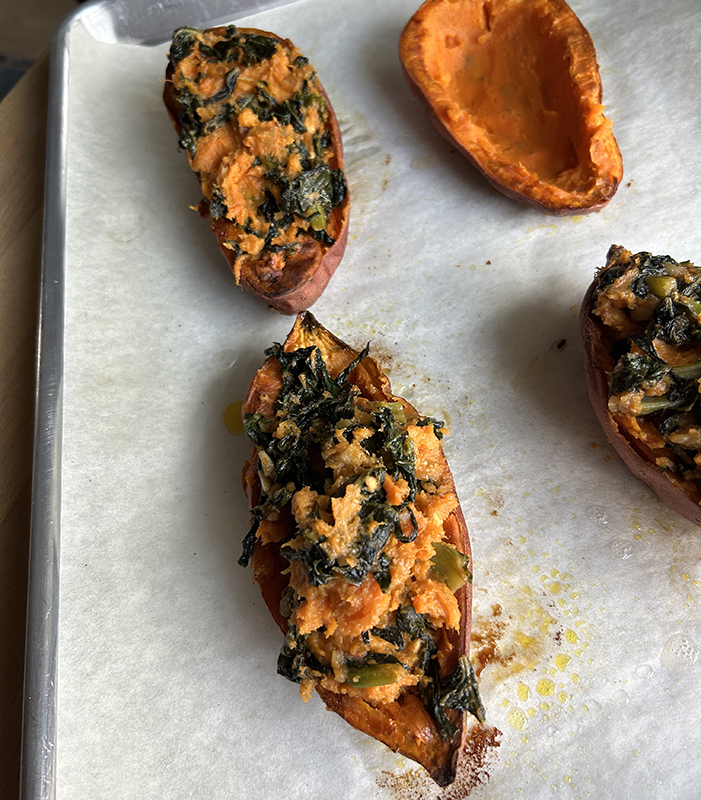

 This quiche is made with peeled squash but the varieties of winter squash, like acorn and jester, that have ridged shells can be hard to peel when raw. It’s a lot easier to remove the skin after the squash is cooked, so that’s what I’ve done here. And roasting the tomatoes concentrates the juices and makes then even sweeter. I’ve used Provolone cheese and a bit of goat cheese, but feel free to sub in other cheeses to your taste.
This quiche is made with peeled squash but the varieties of winter squash, like acorn and jester, that have ridged shells can be hard to peel when raw. It’s a lot easier to remove the skin after the squash is cooked, so that’s what I’ve done here. And roasting the tomatoes concentrates the juices and makes then even sweeter. I’ve used Provolone cheese and a bit of goat cheese, but feel free to sub in other cheeses to your taste.